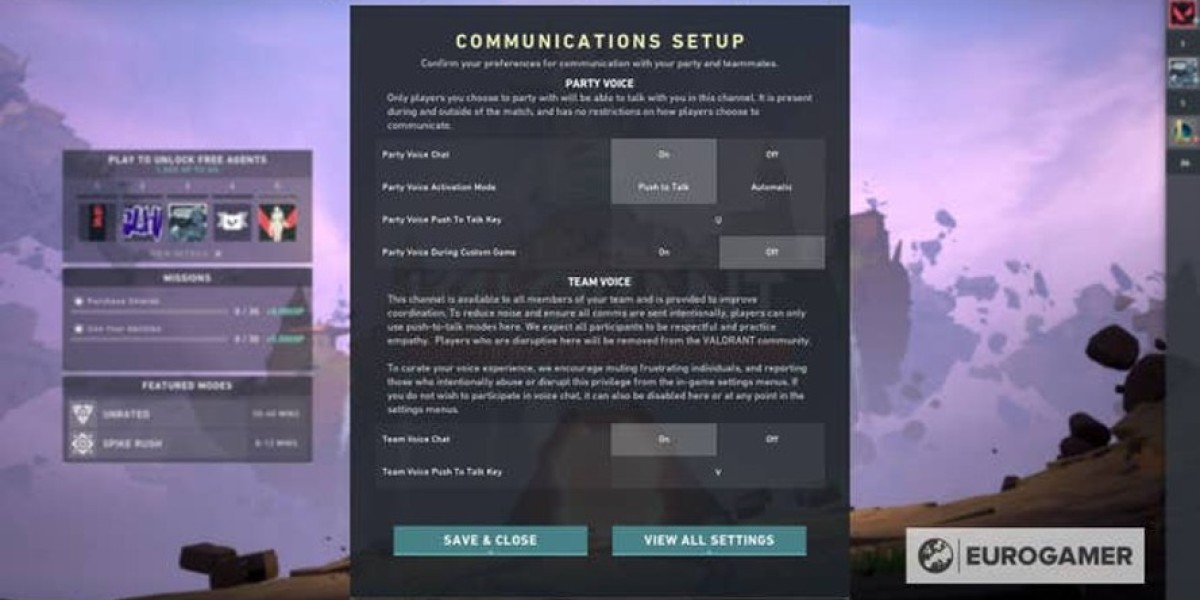Game Design and Visual Identity
Riot Games has crafted a game that exemplifies relentless pursuit of competitive excellence, blending cold precision with an almost fanatical dedication to mastery.
Few titles can rival the intensity and focus that Valorant demands. Every element appears meticulously designed, reflecting a clear and unwavering purpose that resonates with dedicated players. The gameplay often feels remarkably fluid—sharp, deliberate, and executed with millisecond accuracy—creating moments of pure exhilaration. Yet, the experience can swiftly turn into a labyrinth of stark white corridors and muted tones, interrupted only by the shouts of frustration or the deafening crack of gunfire. This oscillation between adoration and irritation is part of what makes the game so compelling; it draws players into a cycle of admiration for its craftsmanship and frustration at its unforgiving nature.
At its core, Valorant is a competitive shooter that combines tactical gunplay with hero-based abilities. The game pits two squads of five against each other across four maps, with the objective varying between planting and defending a device known as the spike or eliminating the opposing team. Matches are structured around 13-round victories, with players earning currency each round to buy weapons, shields, and special skills. The roster of eleven agents, each equipped with four unique abilities—including an ultimate—adds strategic depth to the straightforward premise. Despite borrowing concepts from established titles like Counter-Strike, Valorant’s execution elevates these ideas into a cohesive, polished experience that hinges on precision, timing, and a nuanced understanding of each agent’s role.
Developed and published by Riot Games, the title is available now on PC and has cemented itself as a defining force in the competitive shooter landscape. Its design philosophy is rooted in creating a game that is not only fair and accurate but also irresistibly addictive—an elusive combination that keeps players striving to improve, conquer, and, ultimately, tame its challenging complexity.
Valorant’s identity is deeply rooted in precision and mastery, qualities it proudly showcases through every aspect of its design. From the outset, players are drawn into a world that emphasizes seamless performance, boasting high server tick rates and optimized gameplay even on older hardware. This commitment to smooth, consistent experience underscores the game’s core philosophy: excellence in execution.
One of the most striking features of Valorant is its distinctive art style, which is both visually appealing and highly functional. The visual hierarchy is carefully crafted to prioritize clarity and quick recognition. Your weapon and abilities are prominently displayed in the foreground, shining with brightness and sharpness to immediately draw your attention. Characters are designed with unique silhouettes, vibrant color schemes, and distinct zones, making each one instantly identifiable amid the chaos. The backgrounds are deliberately minimalistic—simple, muted environments that keep the focus on player movement and combat, reducing visual clutter and enhancing gameplay clarity.
Above the action, the game offers subtle world-building elements—hints of lore and story that invite exploration for those who look beyond the immediate fight. This layered design fosters a sense of freedom, allowing players to immerse themselves in the environment and story without sacrificing clarity or performance.
Gameplay, as a result, becomes a visual symphony of precision. Every shot, every movement, every position is immediately apparent, thanks to Valorant’s clean, watercolor-inspired aesthetic. It’s a game where visual feedback is perfectly tuned to inform tactical decisions, making the experience both functional and pleasing to the eye.
However, this meticulous design also imparts a sense of confinement. The maps, despite their varied themes, often feel enclosed—small, walled-in arenas that evoke the feeling of navigating a confined space within an abandoned universe. The environments hint at stories of decay and resilience, where the sparse, almost bleak scenery is punctuated by resilient patches of nature—shrubs growing through stark concrete—adding a touch of melancholy beauty to the overall aesthetic.
In essence, Valorant masterfully balances the demands of competitive precision with an artistic vision that elevates its gameplay into a layered, immersive experience—one that’s as beautiful as it is challenging.
Valorant’s soundscape is intricately crafted to complement its visual brilliance, creating an atmosphere that is both captivating and eerily immersive. The audio design echoes the game's emphasis on stealth, where silence is paramount—each sound must serve a purpose. Footsteps are a key element, with players able to slow their movement by holding shift, effectively muting their footsteps—a skill borrowed from classic tactical shooters like Counter-Strike that rewards precision and timing.
Sound cues extend beyond footsteps, including character callouts that can be heard across the map or locally, as well as the distinctive noises of abilities, teleporters, and different surfaces underfoot. Every sound invites careful listening; for example, Cypher’s tripwire emits a subtle noise before becoming visible, allowing attentive players to react just in time. Similarly, Sova’s drone can traverse teleporters unnoticed, providing a tactical advantage by revealing enemy positions without triggering the map-wide teleport sound—a nuanced detail that highlights the depth of the sound design.
This auditory detail influences gameplay profoundly. Gunfire can be startlingly loud, rivaling other shooters like PUBG in volume, while the lobby music remains deliberately understated—soft and unobtrusive even after adjustments. The game encourages players to move stealthily: sneaking around corners, creeping through corridors, and navigating rounds with a careful ear tuned to every sound cue. Even in the lobby, players must dodge the perils of voice chat and the chaos it brings.
Mastery of Valorant extends beyond sharpshooting and mechanical skill; understanding and utilizing sound is crucial. Success hinges on a player's ability to listen, interpret, and react to the subtle cues embedded in its soundscape. Without this finesse, even the most skilled players will find it difficult to truly dominate the game’s strategic landscape.
Sensory and Mechanical Fusion
Pairing sights with sounds creates a delicate layer of sensory impression, overlaying the complex tactical and mechanical elements that underpin gameplay. Valorant evokes the nostalgic simplicity of classic top-down sports management games, reminiscent of Football Manager’s minimalist interface—just a rectangle with 22 moving dots representing players, and a smaller dot for the ball. It’s a refined distillation of a rich, nuanced game, reduced to its core essence.
A sense of immediacy and intimacy permeates the experience, reflected in the game’s high responsiveness—its tick rates, frame rates, and ping—drawing players into a visceral, real-time engagement. It’s almost like an inverse of the matrix: the game presents a vivid display of colors and sounds, yet what’s truly happening behind the scenes are streams of data—numbers, call-outs, crosshairs targeting heads—that keep the action alive.
Strategic depth is where Valorant truly shines. While I’ve only begun to explore its possibilities—my own attempts at creative plays are humble—I find satisfaction in even small innovations, like my drone-through-teleporter maneuver. Though I’m sure others pioneered it long ago, executing such plays brings a thrill. The game offers an impressive suite of practice tools, including timed shooting ranges and open maps with no cooldowns, allowing players to experiment freely. This sandbox environment fosters learning and mastery, with many tactics being adopted from professional players.
Focusing on agents like Sova, I’ve studied precise positioning—standing at exact pixel-perfect spots and aiming with meticulous detail—to launch recon arrows into strategic locations. Success hinges on these carefully executed moves, embodying the game’s blend of precise mechanics and creative strategy.
Riot Games excels in creating moments of synergy that elevate gameplay to a new level. For instance, a well-placed scouting arrow can set up a devastating combo with a hero’s ultimate ability—like Phoenix sending a doppelganger through a teleporter to surprise opponents, wreak havoc, and retreat unscathed. In Valorant, the game departs from the pure, straightforward competitive format of traditional shooters like Counter-Strike, where identical weapons and equal footing define the experience. Instead, it introduces a diverse cast of agents, each with unique abilities, transforming the battlefield into a complex arena of tactical choices and synergies.
This shift means that core actions such as scouting, breaching, and containment are now infused with variety and strategic depth. Beyond the basic mechanics, players must consider economy management and team communication, all while navigating an expanded toolkit of skills. Riot’s approach is to take a simple, elegant foundation and layer complexity upon it—challenging the notion that simplicity always leads to greatness. Their ability to preserve the game's core beauty amidst chaos is a testament to their skill in game design.
However, a notable limitation lies in the similarity among agents. Initially, players might expect a wide array of distinct characters, but at launch, many agents share overlapping abilities. For example, five agents deploy large smoke clouds for vision control, and three can summon walls of fire, toxins, or ice—creating redundancy that can hinder strategic diversity. This design choice is driven by a commitment to fair competition, as Riot emphasizes covering essential tactical functions—vision blocking, breaching, distraction—while maintaining balance. Future updates promise more varied agents with specialized roles, but for now, diversity remains somewhat constrained.
Playing Valorant often feels less vibrant and more austere compared to other competitive shooters. The game deliberately sacrifices joy and color, embracing a somber, almost ominous atmosphere. Its visuals are muted, and its tone is marked by a quiet intensity, sometimes amplified by the silence or hostility of teammates. The game’s aesthetic elements—weapon skins, victory animations, and agent taunts—are oddly celebratory despite the grim themes of death and combat. This paradox is part of the thrill: the pursuit of mastery, precision, and efficiency fuels the intense experience. Valorant is intentionally designed as a rigorous, relentless environment—often cold and uncompromising—but it’s precisely this starkness that underpins its success, offering players a focused, skill-driven challenge that stands apart from more colorful, exuberant shooters.
What is Valorant and Valorant Points?
Valorant Points serve as the main premium currency in Valorant, allowing players to unlock exclusive in-game content such as weapon skins, character cosmetics, and the Battle Pass, enhancing their gaming experience with unique visuals and features. To obtain Valorant Points, players must purchase them with real money, as they are not earned through regular gameplay. Many gamers choose to visit trusted game trading platforms like LootBar for a convenient Valorant points buy , often taking advantage of competitive prices and fast delivery. This makes it easy for players to quickly top up and enjoy new items in the game.
Why do you choose LootBar.gg to buy Valorant Points?
If players are looking to top up Valorant Points, they may want to consider using the lootbar game trading platform. As one of the most reputable platforms available, lootbar.gg makes it easy and convenient to buy Valorant Points whenever you need them.
One of the standout advantages of using lootbar is its commitment to low prices, helping players get more value for their money whether they’re making a small purchase or buying in bulk. Security is also a top priority, with advanced safeguards in place to protect your data and ensure every transaction is completely safe. Additionally, lootbar offers lightning-fast delivery—your Valorant Points are typically credited within just a few minutes, so you can jump right back into the action. Should you need any assistance, lootbar’s dedicated 24/7 customer support is always available to help resolve any issues and answer your questions, making the entire process smooth and worry-free.
How to top Valorant on LootBar Step-by-Step Guide
To complete a Valorant top up on the LootBar trading platform, simply follow these straightforward steps.
- Start by visiting the official LootBar website and set your language and currency preferences for a personalized experience.
- Once on the homepage, look for the section dedicated to Valorant under the top-up category to begin the process.
- Next, provide your Riot Username and Password as prompted to securely link your account for the Valorant top up.
- Select the number of Valorant Points you wish to purchase and hit the “Top-up Now” button to move forward.
- Choose your desired payment method from the list of available options and confirm your transaction by clicking “Pay Now.”
- After successful payment, your Valorant Points will be credited to your account within minutes, letting you instantly unlock new skins and exclusive items.








